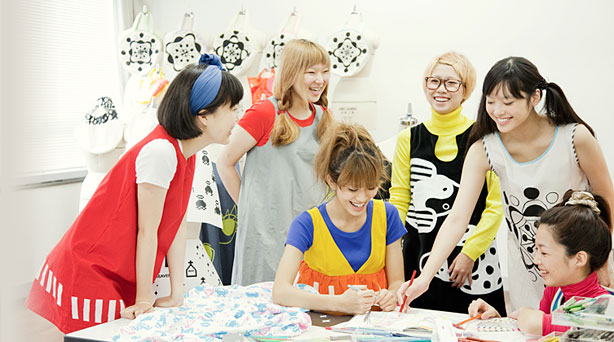Since its establishment in 1900, the Joshibi University of Art and Design has consistently provided clothing education and handed down solid skills and techniques to the next generation. Education stressing the link to society and going back over 110 years has been passed down to the present day.
DCPs (Design Center Projects) for social contributions are implemented, including those where cotton growing and textile dyeing plants are connected with clothing creation as activities involving work alongside the local community, art museums and galleries, others featuring designs of uniforms for medical and educational institutions, and others still where exchanges with overseas communities via textiles take place.
In the Field of Fashion and Textile, students learn the knowledge and skills related to clothing and materials as well as the fashion and textiles required by society to create and produce them. They also design and create fashion, textiles, and characters for children, exploiting women's unique perspective. They pursue art and design in fashion and textiles through the study of theory and experience in food, housing, space, sound, language and literature, heritage and high technology, medical science, philosophy, psychology, and ecology, collaborate with other fields and implement projects from original perspectives. |




















